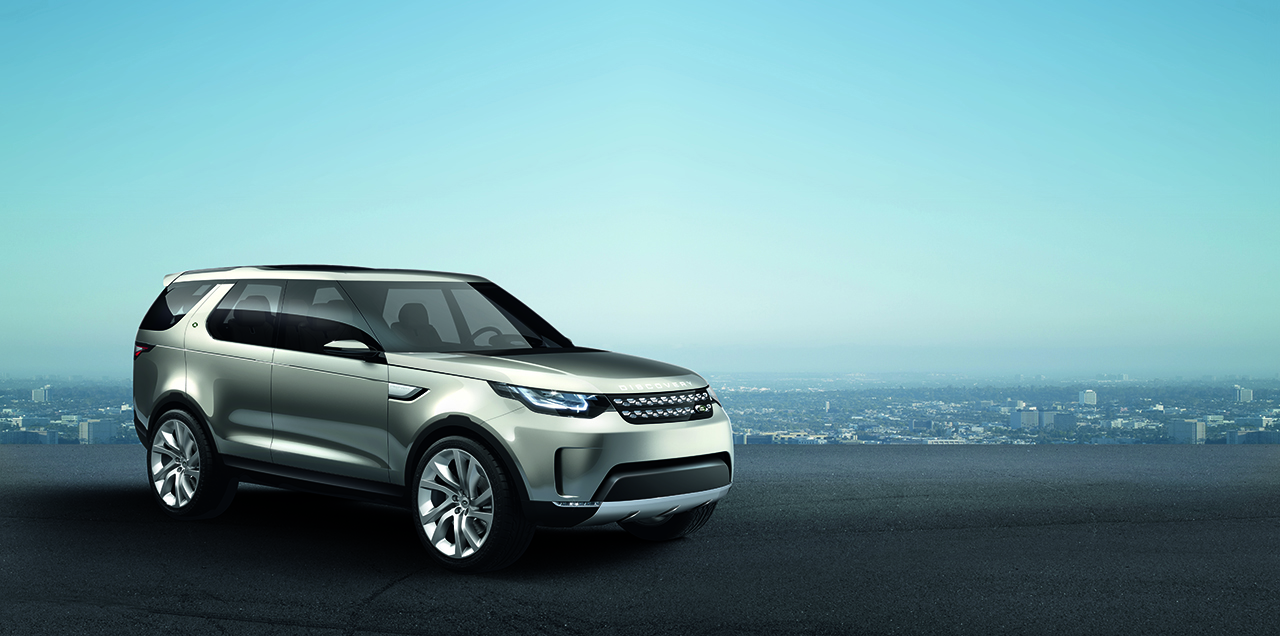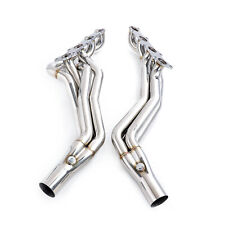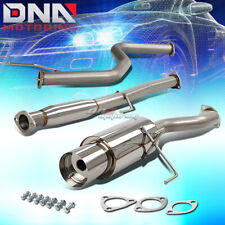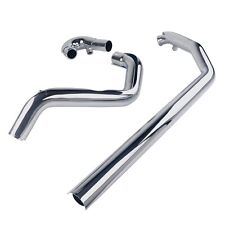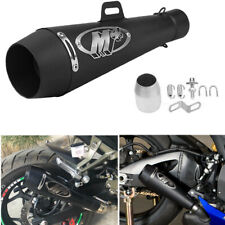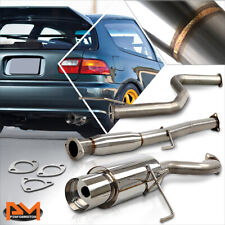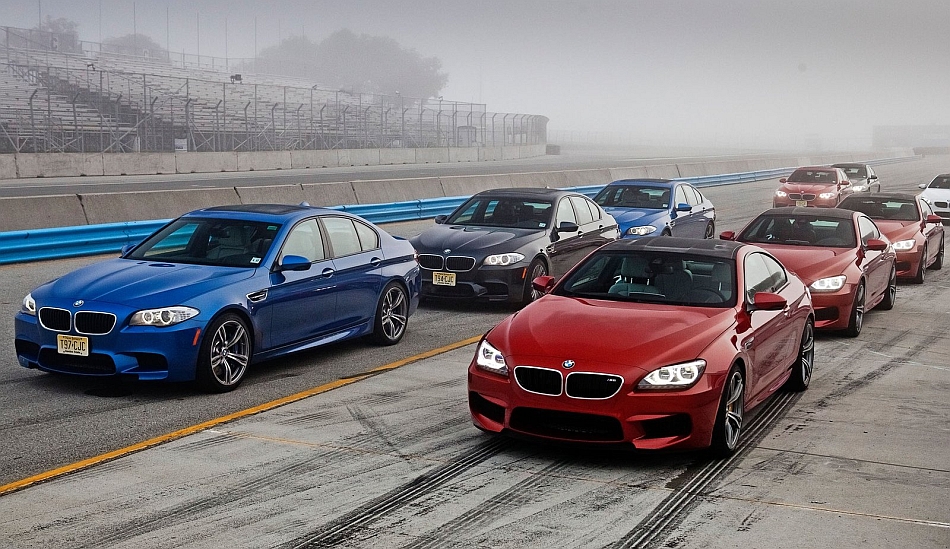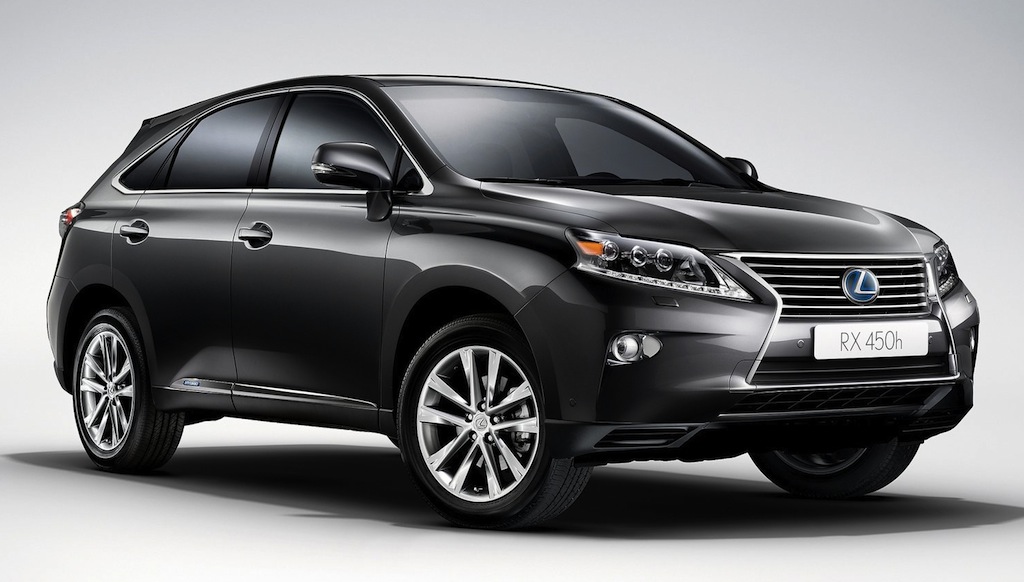BREAKING: Land Rover reveals Discovery Vision Concept ahead of New York debut w/ Video
Land Rover officially let the cat out of the bag surrounding the all-new Discovery Vision Concept. Set to debut at New York in a few days, the Discovery Vision Concept provides a preview of the next generation Discovery, or LR4, as it is currently sold here in the states.
Land Rover describes the new Discovery as a 2015 model , meaning production should be due within the coming year. It will also be the first car to usher in a “distinct range of vehicles” under on solitary name.
It utilizes many modern design cues equating to a very clean-cut and tones design–but one that oddly resembles the latest Ford Explorer. With the opposing C-pillar, the Discovery Vision is definitely unique. Though its floating roofline and raked shoulder, makes it as if a Saab and a Ford Explorer mated and gave birth to this concept. And the front, of course, incorporates Land Rover’s latest corporate front end with the rounded hood and swept-back headlights.
The new Discovery will also feature Land Rover’s latest innovation with the “disappearing” engine hood.
For full details, check out the press release after the jump.
Land Rover Discovery Vision Concept
Tuesday, April 15, 2014
(MAHWAH, N.J.) – April 14, 2014 – The Land Rover Discovery has carved an enviable reputation for itself – from deserts, jungles and barren peaks, where its extraordinary capabilities have seen it through the harshest terrains.
From 2015 onwards, the Discovery nameplate will be born by not just a single model but a distinct range of vehicles that symbolize the essence of the premium SUV: modern, versatile, practical and desirable, with the unmistakable DNA of Land Rover at its core. The future Discovery range is set to take on the adventures of life.
Discovery Vision Concept: Designing the Future
The Discovery Vision Concept is a window into the future of Land Rover’s new Discovery family. It is a distinctive new interpretation of an iconic nameplate, with a focus on practicality and compelling design that truly resonates with customers and respects the established values of the unique Discovery heritage.
With its optimized volume and proportions, dramatic silhouette and modernity, this concept is a radical re-imagining of the Discovery. Its unique DNA is evident, with the stepped roof, alpine windows, command driving position and stadium seating all working in harmony to create a vehicle that acknowledges its roots as it firmly looks forward.
Though a full-size SUV, the Discovery Vision Concept looks remarkably compact. This has been achieved through a combination of well-considered design elements such as wrap-around headlamps and tail lamps and the short front and rear overhangs serving to reduce the visual length. The headlamps utilize advanced laser technology to generate incredibly bright, far-reaching beams of light, paired with LED daytime running lights. Slim foglamps are capable of emitting both infrared and colored lasers, which assist in the Laser Terrain Scanning and Laser Referencing functions discussed below.
The prominent Discovery badging is mounted flush with the surface of the hood. The smooth, clean lines of the hood meet the hidden wipers – which are concealed under a flush panel that deploys when they are inactive – and rise quickly over the windshield, towards the panoramic roof.
In side profile, the raised beltline of the Discovery Vision Concept demonstrates the incredible levels of space available inside. The concept has four coach-style doors: the rear doors are hinged at the rear for easier, more spacious entry and exit. The doors are operated by an electronic gesture recognition system. This system eliminates the need for door handles, resulting in clean, beautifully crafted surfaces and flush tight gaps between their interfaces.
The slim, aerodynamic door mirrors have embedded cameras, which augment the view of the driver through the windows, providing an extended field of vision while parking and reversing. Just below the doors, steps on either side automatically deploy to facilitate entry and exit, with LED lighting to illuminate the ground. There are body colored C-pillars, a stepped roof flowing into the alpine windows and a distinctive asymmetrical design element on the rear license plate panel also references its Discovery heritage. The split tailgate has evolved into a flexible new tailgate design incorporating a social seat system in the vehicle’s luggage area.
The gesture-controlled, electrically powered, single-piece tailgate is paired with an event platform, which electrically deploys from within the rear bumper. The Vision Concept has sleek horizontal tail lamps and vertical foglamps, and as at the front, the rear window also features hidden wipers, neatly concealed under the rear spoiler.
The concept car, which is painted in a Tribeca Grey finish, is fitted with bespoke 23-inch split-five-spoke Aero Viper alloy wheels with a bright silver turned finish.
Interior: Innovating and Versatility Combined
The interior of the Discovery Vision Concept is a dynamic blend of form, color and material, striking in its clean visual simplicity. It has been carefully crafted to deliver spaciousness and an open, airy feel for all occupants, while cocooning them in an environment that feels cozy and secure. Land Rover’s design team has created a warm and welcoming interior, crafted in Nimbus white and Navy blue premium leather, open pore grey wood veneer and polished and brushed aluminum finishes. The large glasshouse and panoramic roof let in plenty of light and afford clear views out, while the vehicle’s high beltline creates a feeling of security.
The Discovery Vision Concept seats seven adults in comfort, with a 2/3/2 layout in three rows. Every passenger space was designed to offer ample headroom and legroom and access to storage, infotainment and accessories.
The Discovery Vision Concept maintains the command driving position that gives excellent visibility. Flowing lines and warmly textured materials tastefully complement clean, futuristic technology interfaces. The steering wheel incorporates two small OLED touchscreens to operate the infotainment system, and with turn signals and headlamp functions operated by gesture recognition control, indicator stalks are absent, creating more visual space and less clutter around the driver. This also affords a clear view of the instrument cluster, which features a high-definition screen with a 3-million-pixel resolution for incredibly vivid, sharp imagery.
The top of the dashboard has a leather-wrapped airfoil-shaped structure for a light, minimalist appearance. The swooping form of the central ‘arm’ encases two high-resolution touchscreens, which display the vehicle’s system menus. The lower touchscreen flips up to reveal a storage space with an inductive charging pad for cable-free recharging of smartphones. Further down along the console is a rotary gearshift control, which deploys and rises into the driver’s hand as it approaches, and a secondary rotary which controls functions such as Terrain Response and Tow Assist. This secondary rotary control can be detached and taken out of the vehicle to operate Remote Control Drive.
The seats have a sculpted, wrap-around design, with bolstered leather wrapped around the frame for a solid structural appearance. The third-row seats get their own color: Navy blue leather, in contrast to the other five seats, which are made from Nimbus white leather. This visual separation helps create a personalized ambience for the third-row passengers. All seven seats feature Sky Blue contrast stitching.
Built to take the demands of family life, the cabin in the Discovery Vision Concept is finished in Foglizzo H20w, an innovative premium leather that is specially treated to make it completely washable, while the Nubuck inserts on the first- and second-row seats feature Foglizzo H203 treatment that makes them totally oil- and water-repellent, to protect against spills. Soft and beautiful, yet highly durable, the Foglizzo leather is very easily washed and cleaned, making it the perfect solution for an uncompromisingly active lifestyle.
A SkyLight cabin light is incorporated into the structural cross-beam that spans the panoramic roof. Providing an even, warm spread of light, it can be activated and brightened or dimmed with a gesture. Gentle orange lighting in the doors and floors further enhances the ambience of the interior.
Innovative Versatility
Versatility and practicality have always been fundamental aspects of the Discovery, and every facet of the carefully considered design of the Discovery Vision Concept reflects a sense of thoughtful innovation. The seats in the second and third rows are able to slide backwards and forwards fully, both independently and as a complete row, fitting flush with the seat ahead or behind them (‘theater-fold’). The seat can also fold down flat, with the seatback effectively becoming a table surface (‘table-fold’). Thus, with varying combinations of theatre-fold and table-fold seats, it is possible to create differing configurations for convenience and comfort – all easily selected from the menu on the console touchscreen. Possible configurations include:
- 7-seat mode: Standard seating for seven adults in three rows
- 6-seat-mode: Second row middle seat in table-fold; more convenience for the second-row outboard-seat passengers
- 5-seat mode: Both second-row outboard seats in table-fold (more convenience for the middle-seat passenger) or both third-row seats in theater-fold with the second row (plenty of extra load space)
- 4-seat mode: Second row outboard seats in full theatre-fold with the front seats, and the second row middle seat in table-fold. Two passengers seated in the third row seats enjoy huge amounts of legroom
The back of each seat contains a gesture-controlled infotainment screen with a wide variety of functions, and also has convenience features such as integrated pop-out coat hangers, fold-out tray tables and tablet docking ports.
The Discovery Vision Concept features detachable travel luggage integrated into the doors, so that passengers can pack luggage without needing to have it take up space in the luggage area. The high-quality hard cases clip into the inside of the doors, and once detached, can be used as a regular roller bag with wheels and extendable handles.
Accessories such as picnic blankets, sleeping blankets and cushions, are included to for outdoors activities. They are handcrafted by Sula and made with material woven by Harris Tweed, exuding British quality and workmanship.
The social seating platform of the Discovery Vision Concept is another elegant manifestation of the Land Rover designers’ mission to maximize versatility. The social seat is deployed from under the luggage space floor. When initially extended, it forms a tailgate platform. When further folded out, it becomes a bench seat.
Used in conjunction with the powered single-piece tailgate, which opens overhead to serve as a canopy, and the tailgate platform, which can serve as a viewing platform to stand on, the social seating system supports a variety of outdoor activities, from picnics, to watching a polo match, and for changing out of muddy clothing. With accessory conversion attachments, the sill step can also be used as a mounted bike/ski rack when the vehicle is on the move.
Pioneering Technology
The Discovery Vision Concept is equipped with pioneering technology that is being developed by Jaguar Land Rover.
Laser headlamps
The headlamps on the Discovery Vision Concept feature laser diodes in combination with LED running lights. Laser light is the next generation of automotive lighting technology. These lights utilize laser-activated phosphor projection to emit a very bright and even beam of pure white light. The power of the laser light beam adds a distance of over 984 ft (300 meters) to the range of the headlight, and the quality of the light itself is closer to daylight than any other type of artificial light, it is smooth and clean, with no patchiness or speckling all of which makes for excellent and greatly enhanced visibility on the road.
Jaguar Land Rover intelligent headlight dipping and tracking technology uses hi-definition cameras to automatically detect and assess oncoming traffic, instantly dipping the relevant parts of the light beam to avoid glare to other road users, and adjusting the rest of the beam to maintain perfect visibility in all driving situations.
By immensely boosting driver confidence and decreasing fatigue, reducing glare and avoiding the need to take one’s hands off the wheel to operate the dip function, laser headlamps aim to make a huge difference to the automotive landscape by vastly increasing road safety. Additionally, laser lights have the added advantage of also being very compact – a tenth the size of LEDs – which opens up numerous design and engineering possibilities.
Smart Glass & Passenger HMI
The Discovery Vision Concept also previews a truly futuristic technology that will transform the user experience for drivers and passengers alike: smart glass. This new glass is capable of displaying imagery, like a computer screen – but is otherwise entirely transparent, like regular glass. Smart glass is used in the entire greenhouse of the Discovery Vision Concept – in all the windows, the panoramic roof and, allied to Head-Up Display (HUD) technology, in the windshield – and opens up a world of exciting possibilities.
Augmented reality involves overlaying real-time information onto the view of the surroundings as seen through the windows by the driver or passengers. The smart glass in the window can work in conjunction with eye-tracking sensors and the vehicle’s navigation system to identify that, for instance, a passing landmark is being observed by one of the vehicle’s passengers – and displays relevant information, such as navigation or tourist data, to that passenger. That information can then be swiped from the window directly into a passenger’s seatback infotainment screen, or even to a docked tablet or smartphone,
The image projection properties of smart glass also enhance the view through the windows; for instance, parking, reversing around corners or parking a trailer is made easier by projecting camera feeds onto the driver’s view out of the smart-glass window, broadening the field of vision.
The graphical properties of smart glass enhance ambience and privacy controls; the window can be dimmed with infinite gradation or completely blacked out with the swipe of a finger, while the panoramic roof also has the option of displaying screensaver-style ‘mood screens’. From a soothing starry night sky as you drive through a city to a clear blue summer sky on a winter’s evening – the smart glass on the panoramic roof lets you set the mood.
The Discovery Vision Concept emphasizes a great infotainment experience for all passengers. Individual 10-inch high-resolution screens are fitted into four of the seat backs, with the console screens serving the first-row right-hand-side and second-row middle passengers. Each passenger has not only full video and internet access via the vehicle’s secure in-car WiFi network and the ability to link up to the smart-glass data from the windows, but can also, thanks to embedded cameras above each screen, video-call any other passenger seated in the Discovery Vision Concept, and talk in a natural face-to-face manner without having to twist rearward. A tablet dock integrated into the seatback folding trays also allows personal smartphones and tablets to connect to the vehicle’s system. The screens can be operated with hand gestures – for instance, swiping a hand left or right to change the mode, or rotating a finger to increase or decrease the volume.
Gesture Recognition Control
A number of other functions in the Discovery Vision Concept are also controlled by intuitive gestures, which is the next generation of interface technology. Jaguar Land Rover researchers have developed calibrated motion sensors that precisely recognize designated hand or finger movements, thus eliminating the chance of unintentional triggering of functions. In addition to the passenger infotainment systems, gestures open and close the vehicle’s doors and tailgate, operate the lights and turn signals, activate the rotary gearshift, and dim and brighten the cabin lighting.
Exceptional All-Terrain Capability
The Discovery, proven on rutted roads and trails across the world, has a proud history of successfully tackling grueling overland expeditions. Most recently in 2013, the Land Rover Expedition America used factory equipped Land Rover Discovery vehicles (Sold as the LR4 in the US) to drive across the United States off-road from North Carolina to Oregon.
The Discovery Vision Concept carries forward this tradition: it was designed and built with maximum capability in its technical systems, and offers the most advanced capability of any Land Rover. The Discovery Vision Concept shows the direction of all-terrain technologies developed by Land Rover, which from highways to mountain tops, deliver the best drive experience, whatever the terrain.
Remote Control Drive
This feature enables the driver to maneuver the car at very low speed while not actually seated inside it, via the removable secondary rotary on the center console, as well as via a smartphone or tablet. Applications include:
- Extreme off-roading, where it is sometimes safer and easier to inch the vehicle over obstacles from an outside vantage point
- Coupling to a trailer
- Driving through gates, where the driver can avoid repeatedly getting in and out of the vehicle by simply opening the gate and letting the vehicle drive through via Remote Control Drive, before shutting the gate and re-entering the vehicle
Remote Control Drive has a simple, easy-to-use interface, encrypted access and operation only via the vehicle’s localized WiFi, putting the power of autonomous vehicle control safely and securely in the driver’s hands.
Laser Terrain Scanning
Another enhancement to the driver’s capability is Laser Terrain Scanning. The foglamps on the Discovery Vision Concept are capable ofemitting infrared lasers, and these are used to scan the ground ahead, map the terrain and display the mapped imagery on the hi-definition cluster screen, providing the driver a vital visual reference and helping him understand the lay of the land while driving in challenging off-road conditions.
Laser Referencing
Both on and off the road,the laser technology capability of the Discovery Vision Concept offers an additional resource: Laser Referencing. Here, the laser light is tuned to specific colors in the visible spectrum and used to project visible images onto the road. This has numerous useful applications, including projecting warning triangles onto the pavement behind the car for other motorists to see in the event of a stoppage, or projecting reference points onto roads, walls, or any terrain, in order to help the driver to judge tight gaps and to park or drive in congested spaces.
“Transparent Hood” HUD Video System
The innovative “Transparent Hood” head-up display system offers an unimpeded view of the ground immediately ahead, greatly increasing visibility. Cameras fitted below the grille feed video to the Head-Up Display integrated into the windshield. While traversing challenging terrain, the imagery can be projected onto the windshield, so that it appears as if the vehicle’s hood is, in effect, transparent.
Terrain Response
The next generation of Land Rover’s iconic multi-mode terrain response system links up and networks all these advanced capability technologies, as well as Hill Descent Control, wet grass traction control, auto hi/lo range, Low Speed Steering Assist and Wade Aid.
Terrain Response not only analyzes the type of surface and terrain being traversed – snow, ice, mud, grass, water, rocks, ruts, tarmac, gravel, sand, inclines and so on – but also proactively anticipates upcoming terrain via Laser Terrain Scanning and forward-facing camera sensors, and instantly engages the appropriate system to best respond to that type of terrain and situation.
Wade Aid is a new water depth sensing system that uses lasers to judge the depth of water ahead before the vehicle even begins to cross, and informs the driver of the feasibility of the intended water fording maneuver1.
The all-terrain capability of the Discovery Vision Concept enables differing levels of driving enhancement:
- All Terrain Progress Control:A low-speed all-terrain cruise control that vectors torque to enable semi-autonomous off-road driving at a steady speed
- All Terrain Coach: for the more manually inclined. Here, the driver chooses from a menu the type of terrain being traversed and then gets a recommendation as to which off-road systems ought to be activated for the best response
- Enhanced All Terrain Coach: marks a specific route across a terrain map rendered on the console display via Terrain Scanning, and suggests the appropriate systems to help navigate it step-by-step
The systems on the Discovery Vision Concept offer multiple levels of autonomy, so that the driver always has the choice to be engaged and involved with the terrain just as much as desired or needed.
These systems aim to provide the driver with accurate and timely information, helping the vehicle progress through difficult terrain, for more confidence, security, and enjoyment on any terrain.
Follow the excitement as the story continues to unfold over the next two weeks on Land Rover’s Facebook, Twitter and Instagram pages and join the conversation using #ReadyToDiscover.

